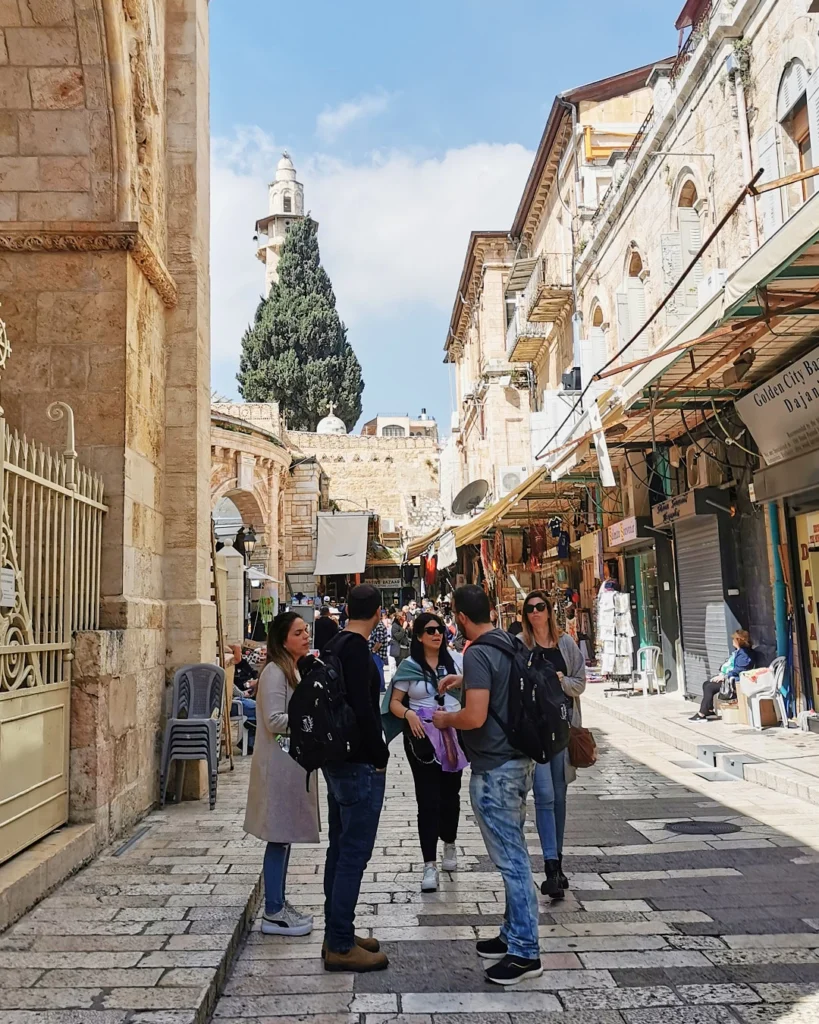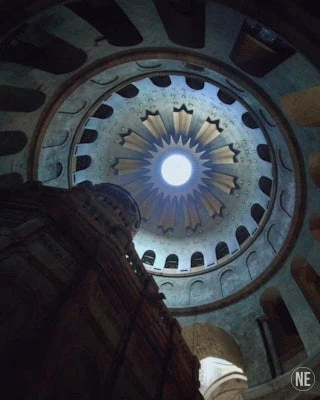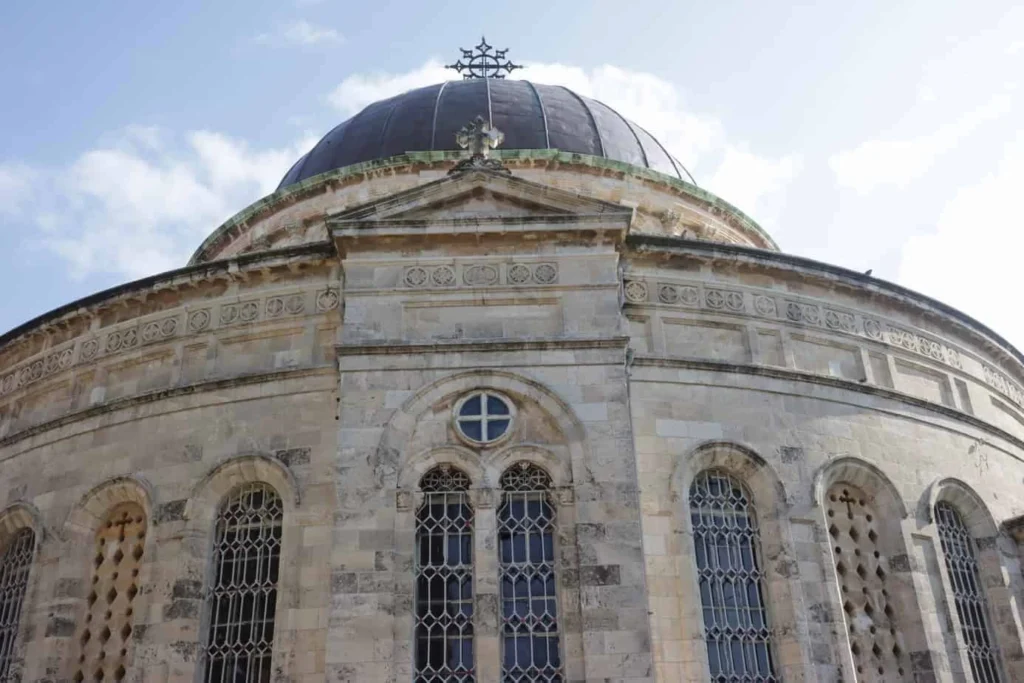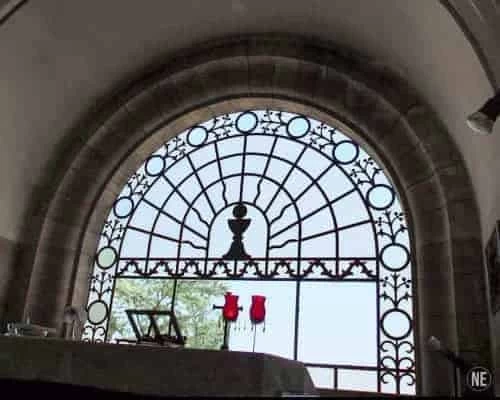The Church of the Holy Sepulcher holds immense significance for Christians worldwide as it is believed to be built upon the hill of Golgotha, where Jesus was crucified, buried, and resurrected. This sacred site, located in the old city of Jerusalem, is a focal point of pilgrimage for Christians from across the globe.
The church is a testament to the diversity of Christian traditions, with various chapels dedicated to different denominations. Among them are chapels belonging to the Armenian, Greek Orthodox, and Latin churches, each adorned with unique artworks and symbols. Additionally, there are sections under the stewardship of Ethiopian, Coptic, and Syrian Christians.
Remarkably, the keys to the church have been entrusted to two Muslim families since the 16th century, underscoring the interfaith significance of this revered place.
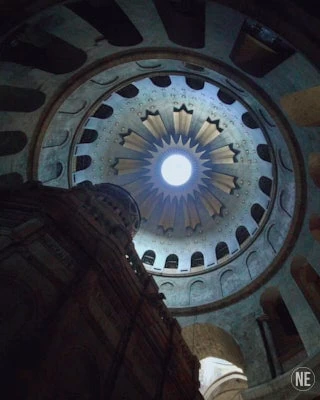
The Story
The site of Jesus’ crucifixion, known as Golgotha or “skull,” likely derived its name from the shape of the rock upon which the cross was placed. According to Byzantine tradition, this location is also associated with the burial place of the first man, Adam, with a burial cave identified beneath the rock.
Jesus was crucified on a Friday, necessitating a swift burial before the onset of the Sabbath. His tomb, carved from stone, was situated outside the city walls, as Jewish law prohibited burials within the city limits. The stone used for anointing Jesus’ body before burial is visible near the church’s entrance.
Following Jesus’ crucifixion, his body was taken to a nearby tomb cut into a cave and sealed with a rolling stone. On Sunday, Mary Magdalene discovered the empty tomb, with the stone rolled away and an angel seated upon it. This site of Jesus’ burial and resurrection is commemorated by the “Edicule,” a small shrine located at the center of the church.
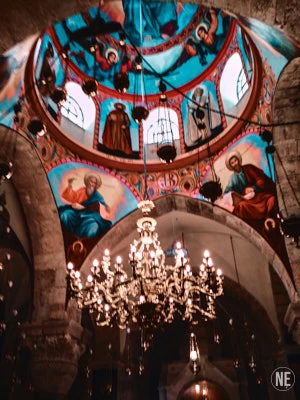
Within the church
The entire Church of the Holy Sepulchre encompasses the final five stations (out of fourteen) along Jesus’ Via Dolorosa, concluding with his crucifixion on Golgotha Hill. The tenth station, located at the church entrance, is known as the “Chapel of the Clothes,” where tradition holds that Roman soldiers removed Jesus’ garments. Climbing the stairs to the right leads to the eleventh station, marking the spot where Jesus was nailed to the cross, often depicted in a mosaic.
To the left lies the twelfth station, denoting the site of the crucifixion itself, which is under the altar and owned by the Greek Orthodox Church. Illuminated by lamps, this sacred space is central to the church’s significance.
The thirteenth station is dedicated to Mary, the mother of Jesus, and features a sculpture of Mary housed in a glass cabinet. Descending further down the hill brings visitors to the “Chapel of Adam,” traditionally believed to lie directly beneath the crucifixion site. According to tradition, Jesus’ blood, symbolizing redemption, flowed down onto the grave of Adam, signifying atonement for humanity’s sins.
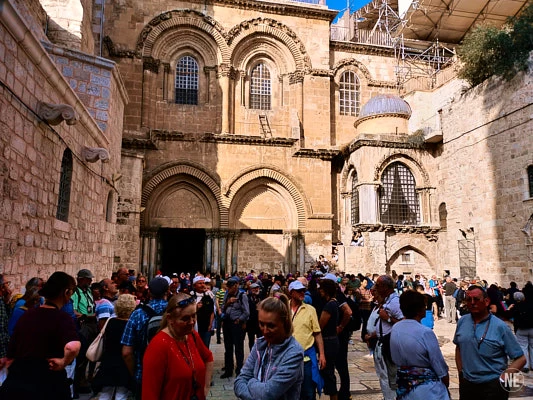
Basic information
Church name: Holy Sepulcher
The 14th station is the finale and symbolizes the tomb of Jesus. It is the place where Jesus Christ’s tomb and resurrection took place.
Address: in the Christian Quarter (follow signs to the Church of the Holy Sepulcher)
Map
Order of Christians: Many orders have chapels in the church.
Construction date: 335 A.D by Emperor Constantine. However, what we see today is mainly from the twelfth century.
Arrival options
| Bus lines | You can take the #1 bus from the central bus station to reach the Church of the Holy Sepulcher. Get off near Jaffa Gate, close to the Mamilla shopping center, and enter the Old City. Once inside, navigate to the Christian district, where you’ll find signs and maps to guide you. The Old City is bustling with activity, and locals are usually helpful if you need directions. Keep an eye out for the church’s unmistakable presence amidst the labyrinthine streets. |
| Car | You can park you car in Mamilla parking lot and walk by foot from Jaffa Gate. |
| Taxi | If you take taxi, the nearest point they will get you is to the market in the Armenian market, from there its very easy to follow the signs to the church. |
| Walking | If you stay overnight in Jerusalem city center, walk by foot to Jaffa gate and follow the signs. |
Accessibility
Accessibility in the Church of the Holy Sepulchre is limited for individuals with mobility challenges. While wheelchair access is available to the main hall, navigating the stairs to reach Golgotha Hill and descending to the chapels may pose difficulties due to the multiple stages involved. As a result, visitors may find it challenging to explore certain areas of the church without assistance.
Opening Hours:
Every Sunday closed at 20:00
April-September open from 05:00 till 21:00 .
October -March open every day from 04:00 to 19:00.
Summer (April to September): Open every day from 5am to 9pm. On Sundays, the church is closed.
Please note that admission is free.
The toilets are free and located within the church.
Telephone number 972 – (0)2-6267000.
Nearby site activities
The Church of the Holy Sepulchre is situated in the Christian Quarter of the Old City of Jerusalem, surrounded by narrow alleys that offer endless opportunities for exploration. Beyond the Christian Quarter, visitors can wander through the Armenian, Muslim, and Jewish quarters, each offering its own unique atmosphere and attractions.
For those interested in exploring more churches, the nearby German Church, known as the Redeemer Lutheran Church, is worth a visit. It features a bell tower that offers stunning panoramic views of the city. While the climb to the top may not be accessible for individuals using wheelchairs, those who are able to climb the tower will be rewarded with breathtaking vistas of Jerusalem. It’s a worthwhile activity for those seeking unforgettable views of this historic city.
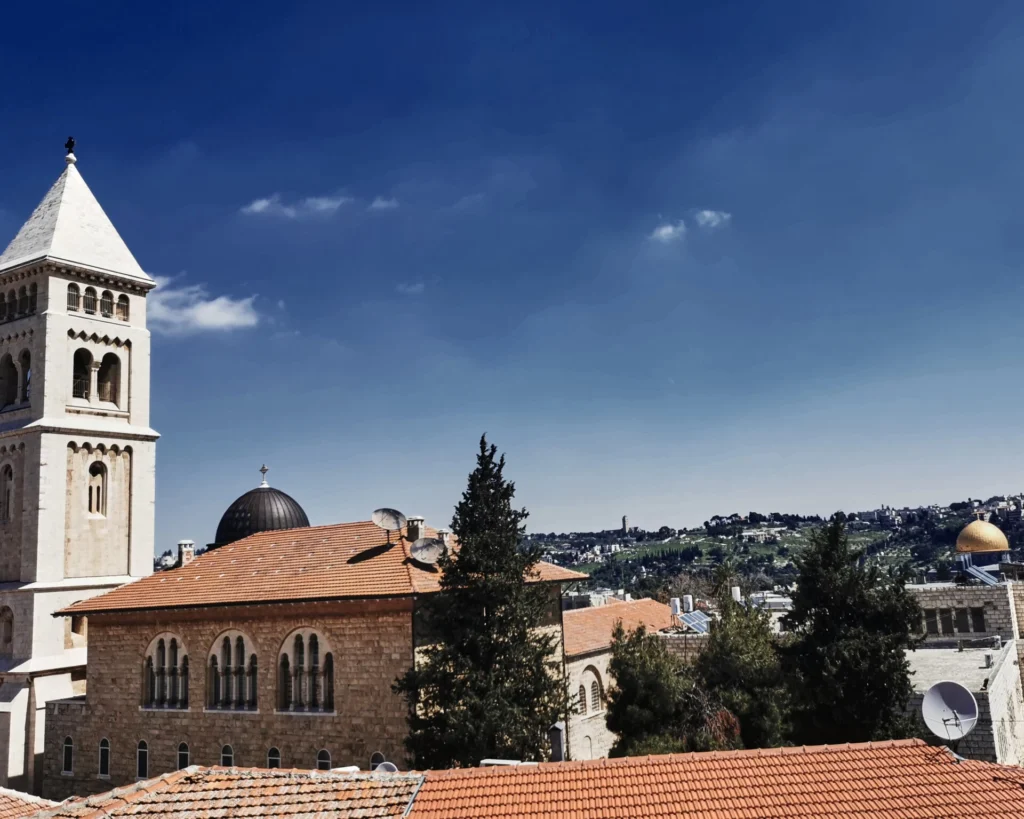
The Garden Tomb
The Protestant place associated with Jesus’ tomb is the Garden Tomb, located in Jerusalem, near the Damascus Gate. Many Protestants venerate it as a possible location for Jesus’ burial and resurrection. The Garden Tomb is an alternative site to the Church of the Holy Sepulchre, which is traditionally regarded by Orthodox and Catholic Christians as the place of Jesus’ crucifixion, burial, and resurrection.
The Garden Tomb features a rocky tomb carved into the side of a hill, resembling the biblical description of Jesus’ burial place. The area surrounding the tomb includes a beautiful garden, which adds to the serene and contemplative atmosphere of the site. Many visitors, particularly Protestant pilgrims, come to the Garden Tomb to reflect on the events of Jesus’ crucifixion and resurrection.
It’s important to note that while the Garden Tomb is a meaningful and significant site for many Protestants, its authenticity as the actual burial place of Jesus is debated among scholars and historians. Nonetheless, for those who visit, the Garden Tomb offers a peaceful and spiritually meaningful experience as they reflect on the central events of the Christian faith.
My Experience
Visiting the Church of the Holy Sepulchre is always a stirring experience. The energy in the air is palpable, filled with centuries of reverence and devotion. The intricate organization of the complex, divided among different Christian denominations, underscores its profound significance. As you explore, every detail speaks to the site’s rich history and deep spirituality, leaving an indelible impression on all who come to pay their respects.
